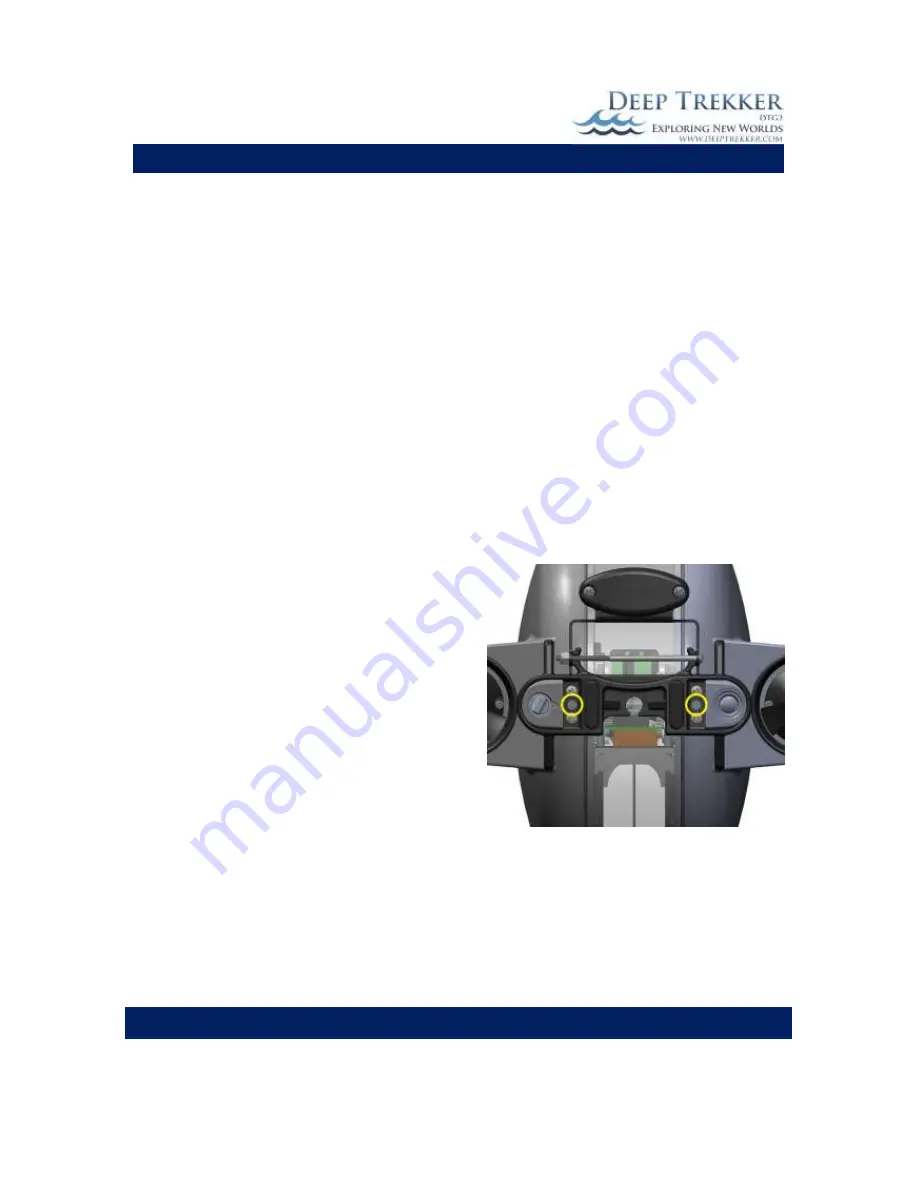
DEEP TREKKER DTG2 USER MANUAL
DEEP TREKKER INC.
22
Transporting
*It is important to store and transport your DTG2 in a fashion that does not rock the pitch system back
and forth. This will cause premature failure because it is working the gear motor and gear train. This
sort of failure is 100% unwarrantable. An easy way to prevent the pitch system from rocking back and
forth is to stow the ROV upside down such that the internal frame is resting against the mechanical
stops located inside the hull. *
For instances where the DTG2 cannot be safely stored in the upside down position, such as during
courier shipping (UPS/FedEx/DHL etc.), the use of the 2 shipping set screws may be required. These
screws are found on the rear of the ROV behind the tether bracket. Their purpose is to mechanically
hold the internal framework so that it is unable to move. To properly use the set screws, the following
steps must be taken:
1)
Slowly rotate ROV backwards (as if to ascend) to position the internal frame against the stops.
2)
While in this position, turn the set screws using a flathead screwdriver clockwise until they are
firmly against the internal frame and holding it in this position.
In this configuration the ROV is unusable and should not be turned on. If the ROV is mistakenly turned
on, the pitch stall error LED will appear because the servo motor cannot override this mechanical
connection.
To release the shipping set screw the following steps
must be taken.
1)
Rotate ROV upside down with the handles
facing downward. This will ensure it does not
rotate until the screw is completely backed
out. While in this position, turn both set
screws using a flathead screwdriver counter-
clockwise until the set screw heads are firmly
against the cover plate.
*DO NOT REMOVE
THE SHIPPING SET SCREW UNDER ANY
CIRCUMSTANCES. THIS OPENS UP THE
SEALED UNIT AND WILL LEAD TO IMMEDIATE
FAILURE IF SUBMERGED*
3)
Slowly rotate ROV to its level position.
It is advised to only use the shipping screw when absolutely necessary. Overuse can lead to a worn o-
ring and which in turn leads to a breach in the hull. Shifting the set crew in or out when debris such as
sand is present in the cavity will lead to premature o-ring failure.
Although the DTG2 needs to be stored in moderate temperatures as outlined under the Storage Section,
it can be transported in climates as low as -40C [-40F] for periods of time not exceeding 24 hours.
Special care must be taken when handling the tether in these temperatures as the jacket will be very
brittle.
Fig. 8
















































